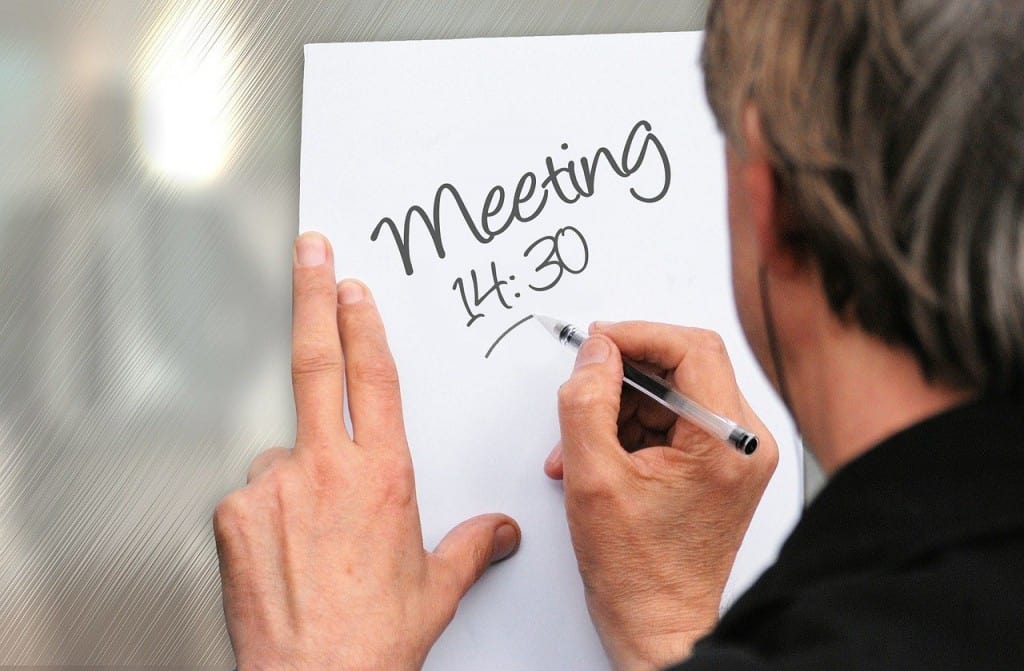12 Ways To A More Effective Meeting
Inspirational, Lists, Other, TechnologyMeetings are meant to be a way of getting workplace issues solved and to move forward, but in many companies they quickly become the bane of everyone’s existence. Rather than assisting the work flow, they are actually hindering it and wasting time of employees who would be better off sitting at their desks getting real work done. Meetings can also lead to staff frustration, and if your staff are resentful towards the company, they’re not going to do their best work. Here are some tips to make meetings work, increase your company’s efficiency and help your staff to be a lot happier.
Do You Really Need to Have That Meeting?

Before setting any meeting, make sure you actually need to be in the same room to achieve an outcome. Having a single-task meeting isn’t the only way to get that task completed – there are other ways to brainstorm, consult and get consensus. Try having an email discussion, putting a time limit on replies so you don’t waste time waiting for responses to reach a decision. It may not be done as quickly as a one hour meeting, but staff will be able to complete other tasks while the discussion is in train, and have time to consider the question carefully rather than being put on the spot in the boardroom.
No Agenda, No Meeting

Never walk into a meeting not knowing what it’s about and what the discussion points are. Have a strong agenda that states each point of discussion, who is responsible for it, and the outcomes that need to be reached. Never hand it out on the day – always send it out to the participants at least a day before so they can be prepared and have answers to potential questions so there isn’t any ‘existentialist’ discussion. Put a time limit to each agenda item, so participants know this isn’t an invitation to chat endlessly. If it’s a regular meeting, make changes every now and again to the standing agenda to make sure it doesn’t end up in a rut over time.
Only Invite Who You Need To

Once your agenda is set and you know exactly what you need to discuss, only invite the staff that will help you towards your outcome. Many meetings tend to be top-level only, but it’s not necessarily the case that management have all the answers. Invite the specialists and technical staff if that is the information you need. Don’t disqualify staff from a meeting because of their level. This will also avoid managers making promises they can’t keep because they’re not aware of what’s possible at the operational level. Also, some staff feel that they need to be ‘in the know’ and want to be invited to every meeting, but if they’re not going to make a contribution, they don’t need to be there.
Be Punctual

Many meetings don’t go well because they don’t start well. Participants often won’t even get up from their desk until the meeting has started. This is not only disrespectful to your fellow employees and your work, but it also wastes time. A meeting that starts ten minutes late will probably end ten minutes late, and then create the same disruption for the next meeting and the next. Arrive five minutes early and have everything you need, don’t saunter in five minutes after the start time as though you’re more important than everyone else because, chances are, you’re not.
Pick The Right Place

Not all meetings have to be held in a stuffy boardroom. Small meetings can be taken off-site to a local café, and will often make the participants feel more relaxed and there is less chance of interruptions. If it’s a large meeting, ensure the room has enough space for everyone. Staff aren’t going to feel inclined to participate if they’re stuck up the back where they feel insignificant. And avoid that meeting room with no windows, that just makes everyone depressed.
Have Someone In Charge

Every meeting needs to have a Chair who runs the agenda, but not everyone is able to do this. Ensure the Chair is someone who doesn’t feel afraid to cut people off if they are going off topic. Many staff who are put in charge of meetings don’t have the confidence to do this – they are afraid that if they interrupt anyone who is a higher level than them, that this will have a negative affect their day to day interactions with that person. Sure, some people can get upset if they are interrupted, but generally someone with confidence will get more respect in the long run than someone who doesn’t.
Run To Time

Your agenda will now have a time limit for each item, so make sure you stick to it. If you allow some items to go over time, it won’t allow enough time for other items to be discussed, and you know what happens then – another meeting is called! To avoid this happening, you’ve already sent the agenda out early so the participants should be prepared, and now make them stick to it. This is why a strong Chair is so important, so they can bring everyone back into line at the right time.
Be Inclusive

Recent studies have shown that women in the workplace feel they are still being treated unfairly, especially at meetings. Even now, men feel that they can talk over the top of other staff members, and this happens to women the most. Chair, here is where you come in again, to ensure that basic common sense and respectful behavior applies, and people will be more inclined to come to meetings if they feel they are going to be able to have a say. Chair, also make sure that everyone is contributing, so if someone is silent, ask them their opinion on a relevant item of discussion. Also try having an agenda item that allows each person the opportunity to give an update – this is particularly useful for regular meetings.
Take Minutes

It doesn’t matter how long or short the meeting is, or what it’s about, someone has to take minutes. There is no point going to the trouble to get all of these busy people together in the one room if there isn’t any record of it. No-one is going to remember everything that was said, and so to make sure you don’t forget some great ideas or interesting points, get someone to jot it all down and put it on file for future reference.
Be Interactive

Remember that not everyone takes in or gives out information in the same way. While you can sit and listen to people talk for an hour and it all sinks in, this may not be the case for everyone. Many people prefer visual interaction, so prepare a short presentation (emphasis on ‘short’) or have a white board to illustrate important sections of agenda items.
Give Everything An Ending

Every story has an ending, and so it should be too with each agenda item. Either close the item off, or follow it up with an action point. Either way, there should be an outcome to each agenda item so nothing is left unresolved. After all, the whole point of the meeting was to see outcomes, so make that a priority. Action points must be given a realistic deadline, and followed up at the next meeting to close the item off.
If You Can Finish Early, Then Finish Early

There’s no greater feeling at school or at work than an early mark. If all of the agenda items have been addressed and everyone has had their say, then why hang around? Staff will appreciate being set free to get back to their other tasks and, if the great meeting behavior continues, there will be less staff trying to get avoid them in future.



